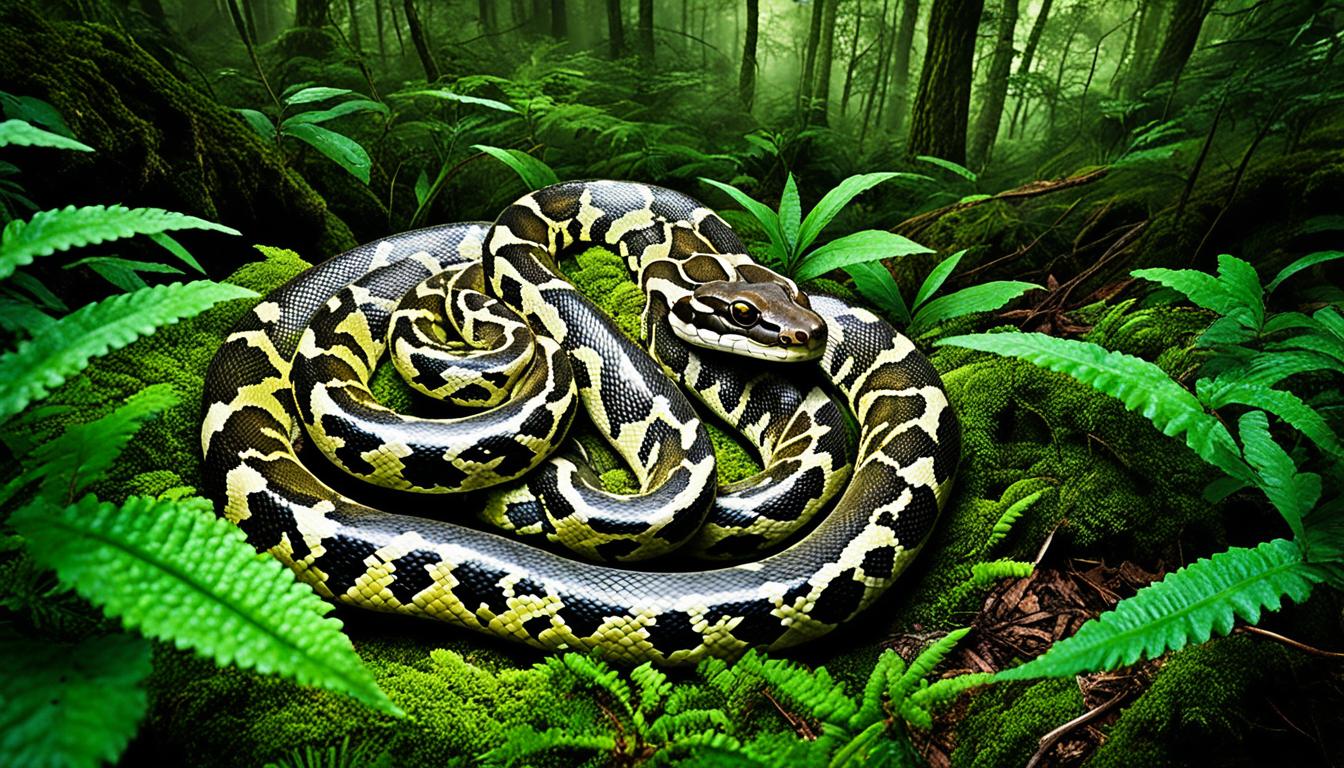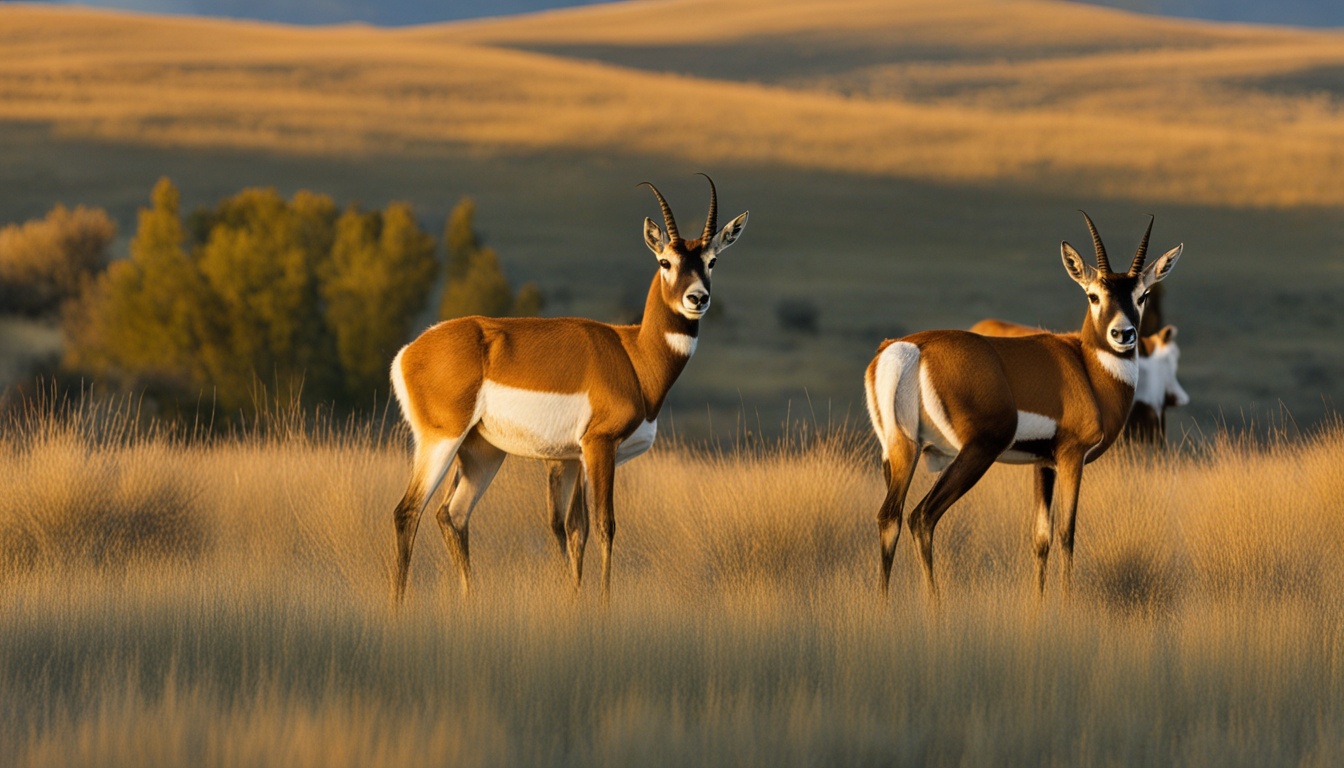Non-native snake species are getting more common in the United States. This is often because of the exotic pet trade. The Burmese python is one such snake, coming from Africa, Asia, and Australia.
In South Florida, especially the Everglades National Park, wild pythons are a problem. They have reduced the number of local mammals, worrying conservationists.
Researchers from several places, like the USGS-FORT, WARC, and the University of Florida, study these pythons. They aim to better understand them. This understanding will help control efforts to protect the ecosystem.
Burmese Pythons: The Most Notorious Invasive Species
Burmese pythons are now a major problem in the United States. Known as Python molurus, they come from Southeast Asia. Now, they’re thriving in the warm, wet areas of South Florida. They’re causing big problems for the local environment.
Introduction to Burmese Pythons
Burmese pythons are among the biggest snake species. They can reach over 20 feet long and weigh up to 200 pounds. Unfortunately, when people no longer want them as pets, they let them go. This has led to a large number of these snakes in Florida. They eat local wildlife, disrupting the natural balance.
Their Origin and Journey to the USA
Originally, Burmese pythons lived in Southeast Asia. The path to the U.S. was through the exotic pet trade. Unfortunately, the trade led to many of these big snakes being set free. They thrived in Florida, showing how harmful this can be for local ecosystems.
Impact on the Ecosystem
The arrival of Burmese pythons has greatly hurt South Florida’s natural area. They eat a lot of the local wildlife, like raccoons and birds. This causes serious problems, harming local species. It’s a big example of why the exotic pet trade needs better rules.
How Burmese Pythons Became Established in South Florida
In South Florida, the story of Burmese pythons starts with the exotic pet trade and a big storm, Hurricane Andrew. These factors mixed together to give these snakes a perfect home.
The Role of the Pet Trade
The USA’s love for exotic pets, like Burmese pythons, began the invasion in South Florida. Imported from Asia, these snakes found their way into the wild. A weak point was the lack of strict pet trade rules, which helped more foreign animals get into America.
Impact of Hurricane Andrew
In 1992, Hurricane Andrew hit, leading to the escape of many Burmese pythons into the Everglades. This storm did not just cause damages. It also started a home for pythons in South Florida. After the chaos, these snakes found a perfect place to live.
Genetic Studies of the Population
Recent studies show unique genetic features of Burmese pythons living in Florida’s Everglades. Despite a low variety, they differ from pythons in Southeast Asia. This discovery suggests they have started their own unique group. Understanding these snakes helps scientists figure out how to keep their population under control.
Habitat and Range of Wild Pythons in the United States
It’s key to know where wild pythons live in the United States. This helps control their spread, especially in places like South Florida. The study of their habitats shows us how complex their needs are and how far they can go.
Preferred Environments
Burmese pythons love swampy areas, like the Everglades. These places have a lot of food and thick plants, which they need to live and have babies. The warm, wet weather is like home, helping them grow in numbers easily.
Habitat Suitability Models
Experts make models to guess where pythons might move to next. They use data from tracked pythons to figure this out. By looking at the environment, they decide which places are good for pythons to live.
Movement and Dispersal Patterns
Studies show that Burmese pythons can move a lot in the US. When they track these snakes, they find they travel far. This shows they could go beyond the Everglades, so it’s very important to keep an eye on them.
Impact on Native Species and Ecosystems
The Burmese pythons’ arrival in South Florida has disrupted the ecosystem greatly. These snakes are big constrictors that now rule as top predators. They’ve cut down local wildlife numbers and changed the whole ecosystem’s balance.
Decline of Native Mammals
Many research projects connect the Burmese pythons in the Everglades to less native mammals. This invasive species fight means less raccoons, opossums, and bobcats about.
Competition with Native Predators
Burmese pythons now compete with local apex predators like American alligators and bobcats. This fight for territory messes with food for the natives. This ecosystem upset goes deep.
Effects on the Food Web
Pythons have started a whole ripple effect on the food web. They eat up many birds, reptiles, and small mammals. This push native predators out and mess up the whole system. It’s a domino effect that hits all levels of the ecosystem.
| Aspect | Impact |
|---|---|
| Native Mammals | Decline in populations, particularly raccoons, opossums, and bobcats |
| Native Predators | Increased competition for food with species like American alligators and bobcats |
| Food Web | Broad-scale disruptions affecting all trophic levels |
Current Research and Management Efforts
Dealing with the Burmese python invasion in the Everglades needs a detailed plan. Scientists use different methods to study and control these snakes. This work is key to reducing their impact.
Tracking and Telemetry Studies
Research on python movements is crucial. Scientists use advanced tools to track where they go. This helps in figuring out how to manage them better.
Environmental DNA Detection
eDNA is a cutting-edge tool for spotting pythons in the Everglades. It checks water for their DNA, giving us an early warning system. This approach makes managing the area much smarter.
Control and Eradication Programs
Many efforts are being made to fight the pythons. These include catching them, making the public aware, and changing policies. Eradication is tough but necessary to protect the local wildlife.
| Research Method | Objective | Key Outcomes |
|---|---|---|
| Tracking and Telemetry | Monitor python movement and behavior | Enhanced understanding of spread and habitat use |
| eDNA Detection | Early detection of python presence | Improved identification and monitoring in specific areas |
| Eradication Programs | Remove pythons and prevent spread | Reduction in python numbers and protection of native species |
The Challenges of Controlling Invasive Pythons
Invasive snakes like the Burmese python are hard to control. They are hard to spot, multiply fast, and adjust well to new places. Knowing this helps us come up with good ways to manage them.
Low Detection Rates
The Burmese python hides well with its camouflaged skin. It’s very secretive, which makes finding it tough. This lack of detection makes managing their numbers hard. Scientists use high-tech methods like radiotelemetry to track their movements and guess how many there are.
High Reproductive Potential
Pythons can have a lot of babies. Female Burmese pythons can lay up to 50 eggs every other year. This means their numbers can grow fast, countering removal efforts.
Longevity and Adaptability
These snakes live a long time and can live in many places. They can adjust to living in swamps or cities. Their ability to eat various animals helps them survive in different habitats. This makes them hard to contain for wildlife management.
Are there any wild pythons in the USA?
While pythons are not native to the United States, their presence is no longer just talked about. Multiple python sightings have been confirmed over the years. These extend beyond their South Florida starting point. Local authorities and researchers are concerned about their spread.
Confirmed Sightings and Reports
Burmese pythons have been seen in various places, especially in South Florida. These sightings go as far north as West Palm Beach and west to Fort Myers. It shows that these snakes can live in different places. The amount of sightings is a sign that we need to watch them closely.
Geographical Spread in the United States
At first, Burmese pythons were mostly in the Everglades. But now, they are showing up in new areas. Experts think they might move to more places in the southern United States. Their ability to live in different environments means we have to stop them from spreading.
Potential for Further Expansion
The fact that pythons can have a lot of babies and live in many places is a worry. There are already places they might like beyond where they are now. Scientists and those who protect nature are looking closely at how they might spread more. This work aims to keep our wildlife and environment safe from these invaders.
Data on the geographical spread of invasive species within the United States:
| Location | Year Reported | Confirmed Sightings |
|---|---|---|
| Everglades National Park | 2000 – Present | High |
| West Palm Beach | 2015 | Moderate |
| Fort Myers | 2018 | Increasing |
Non-Native Snake Species in America: A Broader Look
The problem of non-native snake species in America goes beyond just Burmese pythons. It threatens local habitats. By competing with local wildlife for food and disrupting their homes, these invaders upset the balance.
Other Invasive Snakes
Several snake species, like the boa constrictor and African rock python, have made homes in places like Florida and Texas. They’re good at surviving, beating native predators, and hunting the area’s animals.
Impacts on Local Wildlife
These invasives are really hurting local ecosystems. They eat up small mammals, birds, and reptiles, throwing the natural order off balance. This can mess up the food chain, damaging entire habitats.
Management and Prevention Strategies
Handling these snakes requires a mix of approaches. Officials are tightening rules on the pet trade, raising public awareness, and using new ways to catch them. People are asked to help by not letting go of exotic pets and reporting sightings.
To wrap up, keeping non-native snakes in check needs multiple steps. This work is crucial to protect wildlife and keep ecosystems healthy.
The Future of Pythons in the Everglades and Beyond
Burmese pythons in the Everglades are a big problem for the environment. They eat animals like raccoons and some birds. This can mess up the natural balance there.

Long-Term Ecological Consequences
The pythons are hurting the Everglades’ local wildlife. Creatures like raccoons and birds are in danger because of them. This is causing problems for the ecosystem.
Ongoing Research and Innovations
Scientists are working hard to learn how to stop the pythons. They’re using things like tracking to see where they go. New technology, like DNA testing, is also helping a lot.
These efforts are key to saving the Everglades. Innovations are happening all the time. These new ways are really important for protecting the area.
Community Involvement and Awareness
Getting the public involved is very important. People are learning how they can help stop the pythons. Projects like citizen science and events raise awareness.
More help from the community means a better chance to save the Everglades. Everyone working together is the best way to fight the python problem.
Key Takeaways on Python Invasion in the USA
The Burmese python invasion in South Florida is a major environmental issue. This snake species is damaging local wildlife. It’s causing a big drop in the number of mammals, birds, and reptiles, which are native here. The Everglades are particularly affected, showing us how serious this issue is.
Dealing with these pythons is hard, and it needs smart solutions. Scientists are working on new ways to manage their numbers better. They use GPS studies and tests on the environment to track them. Plus, there are plans to work together to control their growth and stop them from spreading.
Preventing this invasion is key in keeping our ecosystems safe. Everyone must work together to stop these snakes from expanding. This includes getting the word out and getting communities involved. If we join forces in studying, managing, and spreading awareness, we can help save our wildlife from the harm these pythons cause.










